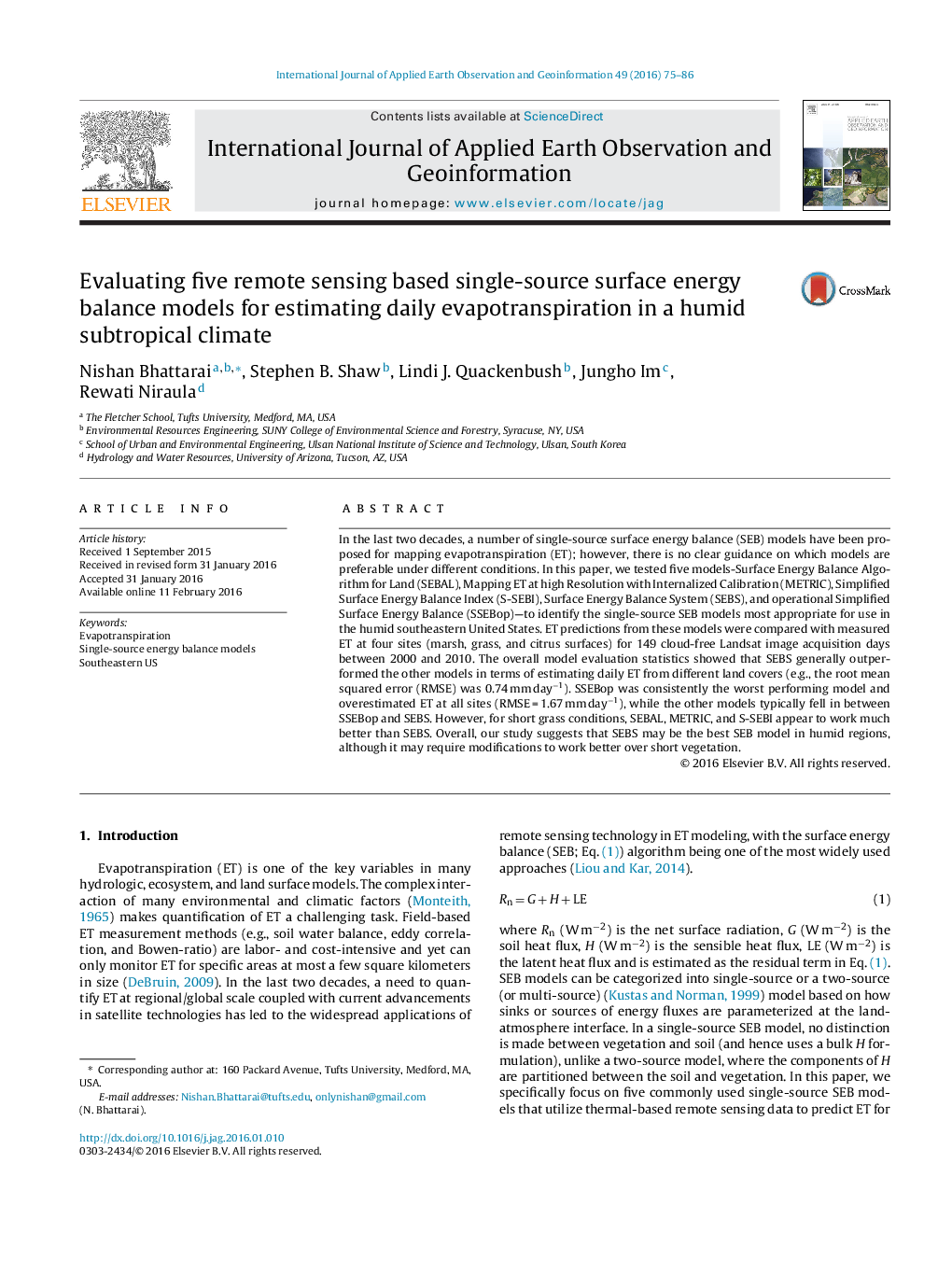| کد مقاله | کد نشریه | سال انتشار | مقاله انگلیسی | نسخه تمام متن |
|---|---|---|---|---|
| 4464619 | 1621808 | 2016 | 12 صفحه PDF | دانلود رایگان |
• SEBAL, METRIC, S-SEBI, SEBS, and SSEBop were evaluated in the southeastern US.
• SEBS performed the best but overestimated daily ET under grass conditions.
• SEBAL, METRIC, and S-SEBI also showed good potential for application in the area.
• All models performed best under marsh conditions.
• Poor results from SSEBop indicated its limited applicability in the area.
In the last two decades, a number of single-source surface energy balance (SEB) models have been proposed for mapping evapotranspiration (ET); however, there is no clear guidance on which models are preferable under different conditions. In this paper, we tested five models-Surface Energy Balance Algorithm for Land (SEBAL), Mapping ET at high Resolution with Internalized Calibration (METRIC), Simplified Surface Energy Balance Index (S-SEBI), Surface Energy Balance System (SEBS), and operational Simplified Surface Energy Balance (SSEBop)—to identify the single-source SEB models most appropriate for use in the humid southeastern United States. ET predictions from these models were compared with measured ET at four sites (marsh, grass, and citrus surfaces) for 149 cloud-free Landsat image acquisition days between 2000 and 2010. The overall model evaluation statistics showed that SEBS generally outperformed the other models in terms of estimating daily ET from different land covers (e.g., the root mean squared error (RMSE) was 0.74 mm day−1). SSEBop was consistently the worst performing model and overestimated ET at all sites (RMSE = 1.67 mm day−1), while the other models typically fell in between SSEBop and SEBS. However, for short grass conditions, SEBAL, METRIC, and S-SEBI appear to work much better than SEBS. Overall, our study suggests that SEBS may be the best SEB model in humid regions, although it may require modifications to work better over short vegetation.
Journal: International Journal of Applied Earth Observation and Geoinformation - Volume 49, July 2016, Pages 75–86
